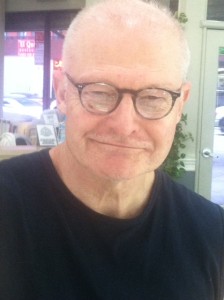
Editor’s Letter: Gil Tunnell
Introduction: Diana Fosha
Tailoring AEDP Interventions to Attachment Style: Karen Pando-Mars
Editor’s Letter
By Gil Tunnell, PhD

This issue of Transformance is a Special Edition devoted entirely to Senior Faculty member Karen Pando-Mars’ project on working with different attachment styles.
Karen’s work is groundbreaking and a brilliant contribution to the AEDP literature. It is with much excitement that I introduce her article.
Described initially by John Bowlby and then documented and expanded in Mary Main’s research with 18-month-old toddlers in the “Strange Situation,” there are four distinct attachment styles: Secure, Insecure/Avoidant, Insecure/Ambivalent and Disorganized.
AEDP teaches us how to activate the transformance pathway from the get-go, in the very first session, to begin the process of healing. However, even with their transformance-focused AEDP therapists, many patients do not begin treatment having Secure attachment, which would allow therapy to proceed more smoothly with less defense work at the “top of the triangle.” When that is not the case, the therapist must deal with Insecure or Disorganized attachment styles, and “top of the triangle” work plays a more central role in the treatment.
For several years, Pando-Mars has been studying diligently what she does clinically that is different for patients with each attachment style. She has refined what she has learned, and this article is the result. As she says, it is a work in progress.
Pando-Mars first elaborates on Fosha’s original description of the four attachment styles (The transforming power of affect, 2000), providing rich theoretical descriptions of their differences. She then describes how she works with each style specifically. Case vignettes demonstrate what the sessions look like in real time. Finally, she has developed three highly detailed—but at the same time very succinct—Grids as quick guides to how Insecure and Disorganized patients appear when they begin AEDP in “self-at-worst” mode, what each style distinctively needs from their AEDP therapist, and interventions to help clients grow into a more Secure attachment, i.e., functioning as “self-at-best” more of the time.
In her introduction to this special issue of Transformance, Diana Fosha places Pando-Mars’ work in the more meta-context “of what has come before it and the new era I think it is ushering in,” by which she means, an innovative, AEDP-specific way of working with psychopathology.
Although Karen Pando-Mars’ article is longer than usual, please take your time to savor it. “Tailoring AEDP Interventions to Attachment Style” is a valuable and significant contribution to AEDP.
Introduction
By Diana Fosha, PhD
You are about to embark on the wonderful new work from Karen Pando-Mars on tailoring AEDP interventions to specific attachment styles. This is a momentous achievement in and of itself, as you will see. However, to my mind, it also ushers in a new phase in the development of AEDP. I say this because I want to put Karen Pando-Mars’ work on tailoring AEDP interventions to each attachment style in the context of what has come before it and the new era I think it is ushering in. This article, to which an entire issue of Transformance is dedicated, is the product of five years of work. In my view, the article by Karen Pando-Mars is groundbreaking not only in the content of her work, which is awesome, but that it also jumpstarts AEDP’s own theory and practice of how to work with psychopathology.
And, as such, I thought it important to place it in context.
Tailoring AEDP Interventions to Attachment Style
By Karen Pando-Mars
Download the pdf Here
Grids for this article:
Figure 1: 2016 The Self-at Worst Configuration
Figure 2: 2016 The Self-at Best Configuration
Figure 3: Interventions and Aspirations For
Abstract. Accelerated Experiential Dynamic Psychotherapy (AEDP) is an attachment-based, experiential and transformational treatment model whose theory, procedures and maps are ideally suited to address and treat relational trauma, which often underlies the motivation of patients to seek psychotherapy. AEDP’s therapeutic stance is one that employs corrective emotional and relational experiences to help patients know they exist in the heart and mind of another. Yet, to enter this kind of explicit relationship can be daunting for patients with insecure attachment styles, whose adaptive strategies become defensive shields to protect them from further relational wounding. This can be challenging for the therapist and patient alike. This paper is part of a larger project on how to differentially apply AEDP’s comprehensive model to treat attachment wounding, given the distinct formations of each attachment style. The paper starts with a brief summary of attachment theory and styles, and how AEDP applies and adapts the theory to therapeutic work. The grids I developed are then introduced to help match defenses and interventions to attachment style, to help orient and guide the therapist. The first grid shows detailed configurations of defense and affect regulation strategies for each attachment style. The second grid identifies the configuration of secure attachment as applied to the psychotherapy relationship. The third grid identifies specific interventions and targets specific goals to mobilize optimal transformations for each style. Here, transcripts illustrate how these AEDP interventions can be optimally attuned to patient attachment style.
